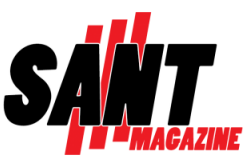Workplace injuries create stress for employees and employers alike. Pain, paperwork, and uncertainty can make recovery feel complicated. A Medical Provider Network, often called an MPN, exists to make this process smoother. An MPN connects injured workers to approved doctors who know how to handle job-related injuries.
Providers like kaiser for workers comp also follow standards tied to compensation. By relying on an MPN, workers gain faster treatment, reliable care, and clear guidance. For anyone facing an injury at work, the advantages of an MPN are easy to see.
Access to Specialized Medical Care
An MPN directs employees to doctors who focus on workplace injuries. These providers treat conditions ranging from back strain to repetitive stress problems. Their experience helps them design treatment plans suited to job-related cases. Workers do not waste time searching for the right doctor. Instead, they are guided straight to qualified professionals who meet specific requirements. This connection improves recovery results and avoids errors. Knowing that care comes from experts gives employees greater peace of mind. Specialized medical attention lays the foundation for a safer and faster recovery.
Faster Approval and Treatment
Speed matters when someone gets hurt on the job. Because MPN providers are already approved, workers skip long waits for authorization. They can book appointments quickly and begin treatment without delay. Early treatment prevents injuries from becoming worse. It also reduces the time workers spend away from their jobs. Employees who start care sooner are more likely to heal properly and return faster. This efficiency benefits both workers and employers. Quick access to care is one of the strongest reasons to rely on an MPN.
Clear Support for Workers’ Compensation
Dealing with workers’ compensation can feel confusing. An MPN like kaiser for workers comp helps by offering doctors who already understand the system. These providers handle the forms, reports, and updates required for claims. Their familiarity reduces mistakes that can slow down benefits. Workers do not have to figure out the process on their own. Instead, the medical and administrative sides work together smoothly. This support allows employees to focus on recovery rather than paperwork. A well-managed link between care and compensation creates less stress for everyone.
Consistency in Quality of Care
Employees want assurance that their treatment will meet high standards. An MPN provides this consistency by requiring each provider to meet qualifications. Care is guided by clear rules for workplace injuries. No matter which doctor a worker sees, the level of service remains dependable. This consistency gives employees confidence in the process. Employers also benefit from knowing their staff receive reliable care. Trust grows when workers see fairness and quality in every step. A consistent approach reduces risks and builds stability throughout recovery.
Guidance Through Recovery
Healing from a workplace injury usually takes more than one visit. Many cases require therapy, follow-ups, or rehabilitation. MPN providers guide workers through every step of this process. They track progress, adjust care when needed, and explain how to return safely to work. Some networks also include physical therapy specialists to help with recovery. This structured path prevents employees from feeling unsupported. Employers gain reassurance that return-to-work plans are realistic and safe. Guidance makes the journey smoother for workers and protects them from reinjury.
A Medical Provider Network does more than connect workers to doctors. It creates faster access to treatment, offers specialists who understand workplace injuries, and provides strong support for workers’ compensation. It also ensures consistent quality and gives employees guidance throughout recovery. These benefits reduce stress and improve outcomes for both workers and employers. By turning a complex process into a clearer one, an MPN helps injured employees focus on what matters most: healing and returning to everyday life.

